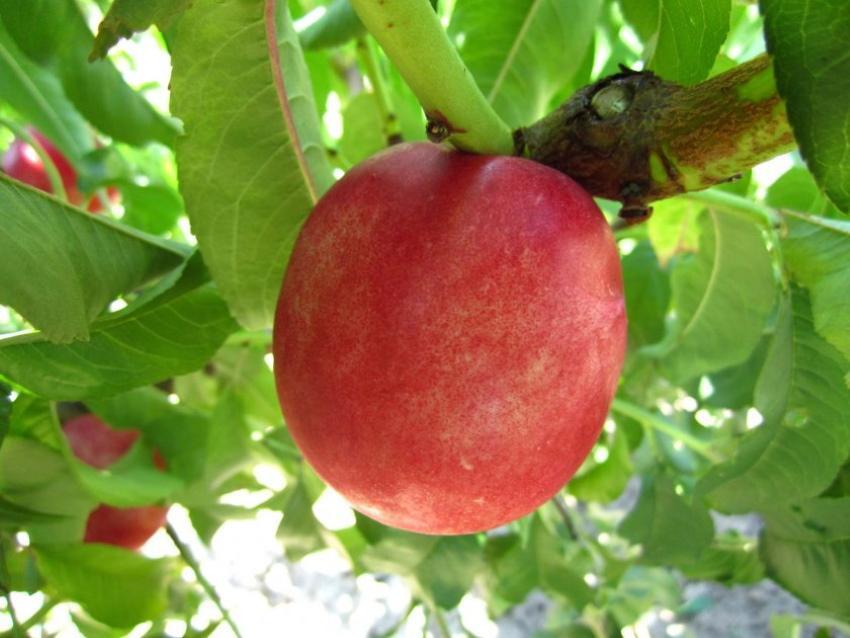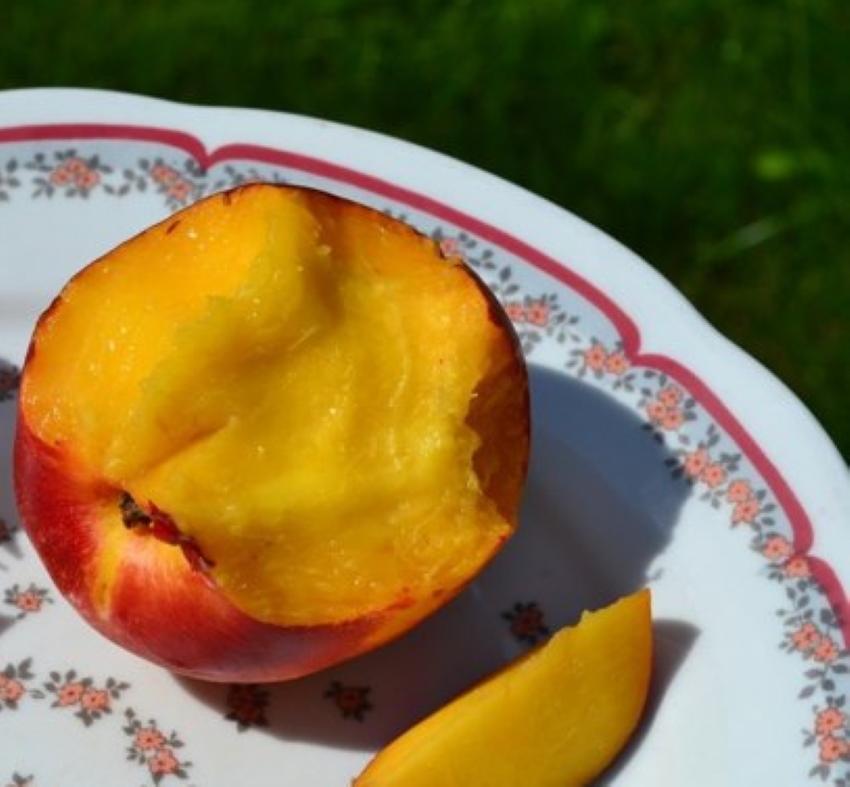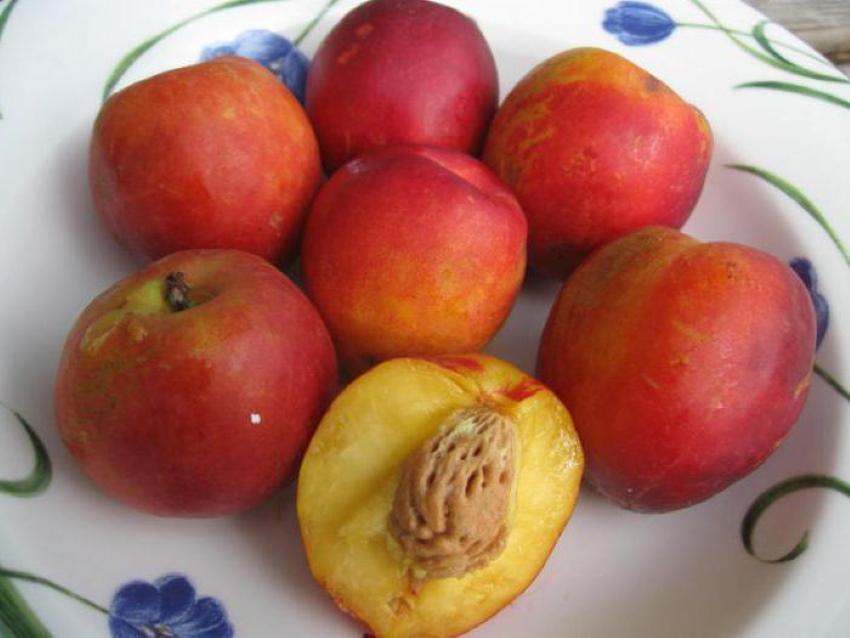What is the name of a peach crossed with a plum - a memo to a novice gardener
 Thanks to breeders, shaggy softish peaches have turned into shiny, dense fruits with absolutely smooth skin. The plum, which acts as a parent for many types of peach hybrids, also played an important role in this. But at the same time, there are so many varieties that sometimes we do not even know what the name of a peach crossed with a plum is. Among them, there are completely individual crops or the result of crossing with an apricot, an apple, and there are still many varieties with three parents. It is not easy for a novice gardener to understand everything. To begin with, let's define what kind of fruit the plum and peach gave birth to.
Thanks to breeders, shaggy softish peaches have turned into shiny, dense fruits with absolutely smooth skin. The plum, which acts as a parent for many types of peach hybrids, also played an important role in this. But at the same time, there are so many varieties that sometimes we do not even know what the name of a peach crossed with a plum is. Among them, there are completely individual crops or the result of crossing with an apricot, an apple, and there are still many varieties with three parents. It is not easy for a novice gardener to understand everything. To begin with, let's define what kind of fruit the plum and peach gave birth to.
What is the name of a peach crossed with a plum

- large;
- rounded;
- with a beautiful scarlet blush;
- covered with matte smooth skin;
- the pulp is very firm, yellow and not juicy.
It is noteworthy that plum nectarine is characterized by increased resistance to parental diseases. He is practically not amazed curliness, and even better tolerates low temperatures, unlike real peaches.
Who, then, is the peach plum
 The name of the culture is misleading to many gardeners, and they believe that the peach plum is also a hybrid peach. In fact, this is a separate variety of plum with large fruits that retain the characteristics of a plum. They are yellow-green in color, and the side of the fruit that is in the sun is red. The skin is thick, with a waxy coating, the flesh is yellow and firm. But the stone really looks more like a peach one, with the same pattern.
The name of the culture is misleading to many gardeners, and they believe that the peach plum is also a hybrid peach. In fact, this is a separate variety of plum with large fruits that retain the characteristics of a plum. They are yellow-green in color, and the side of the fruit that is in the sun is red. The skin is thick, with a waxy coating, the flesh is yellow and firm. But the stone really looks more like a peach one, with the same pattern.
Peach plum is also called Red Nectarine, so it's not surprising that such confusion has arisen.
Peach plus plum plus apricot equals sharafuga
 Another famous hybrid is called the sharafuga. Three cultures became his parents at once: plum, peach, apricot. From the first sharafuga got the shape of the tree itself with thorns. The shape of the fruit retained the "apricot genes", but the stone remained with a characteristic peach pattern. As for the taste, it depends on the degree of ripeness. Fully ripe fruits have a juicy sweet apricot pulp, and unripe fruits have plum sourness. The fruits are large enough, round and smooth. Unlike apricot, they do not crumble and hang on branches for a long time. Depending on the specific species, the fruits can be either purple with red flesh or yellow with light flesh.
Another famous hybrid is called the sharafuga. Three cultures became his parents at once: plum, peach, apricot. From the first sharafuga got the shape of the tree itself with thorns. The shape of the fruit retained the "apricot genes", but the stone remained with a characteristic peach pattern. As for the taste, it depends on the degree of ripeness. Fully ripe fruits have a juicy sweet apricot pulp, and unripe fruits have plum sourness. The fruits are large enough, round and smooth. Unlike apricot, they do not crumble and hang on branches for a long time. Depending on the specific species, the fruits can be either purple with red flesh or yellow with light flesh.
The plum gave the sharafuga another advantage: the hybrid is highly resistant to low temperatures. It is successfully grown not only in the south, but also in the middle lane.